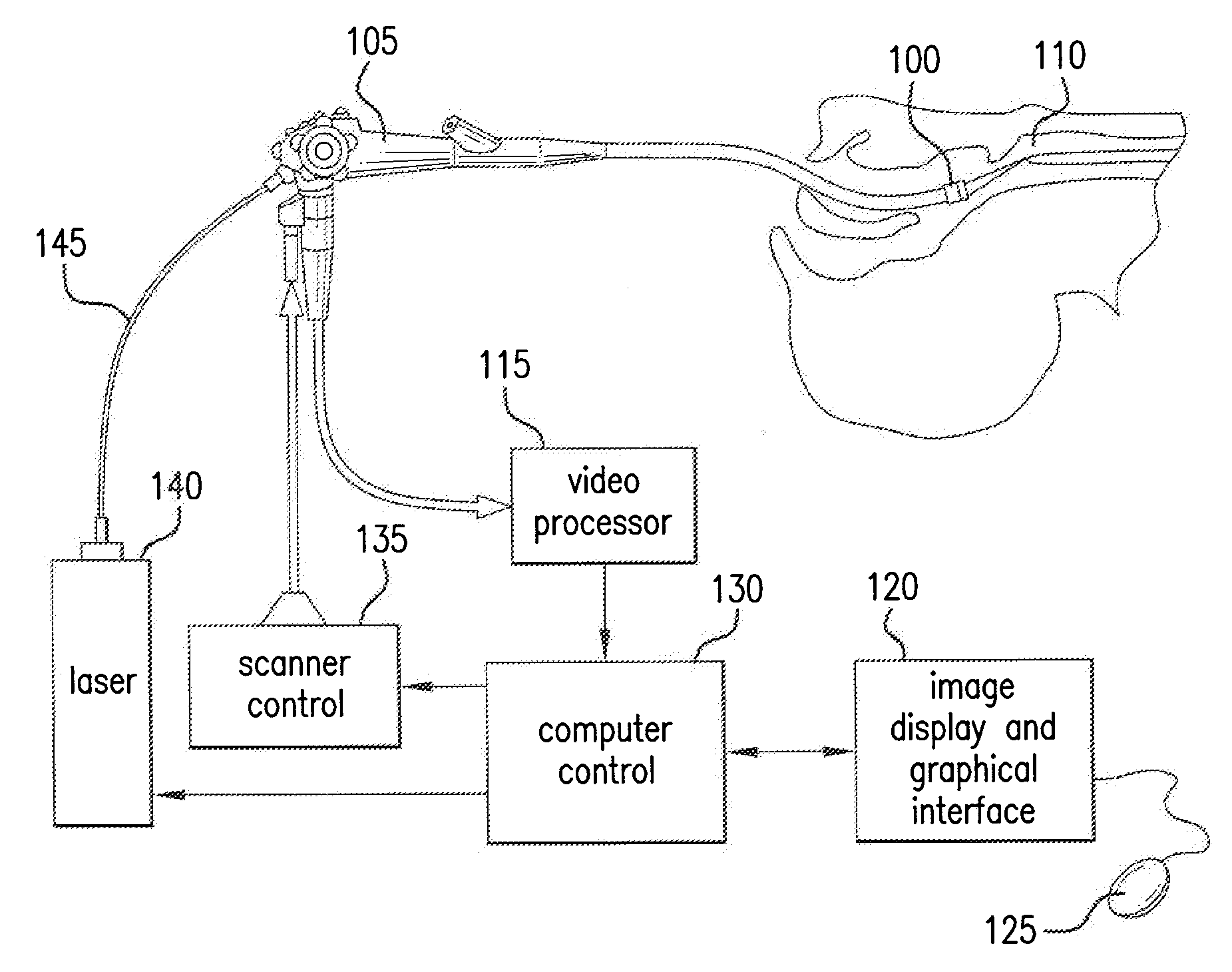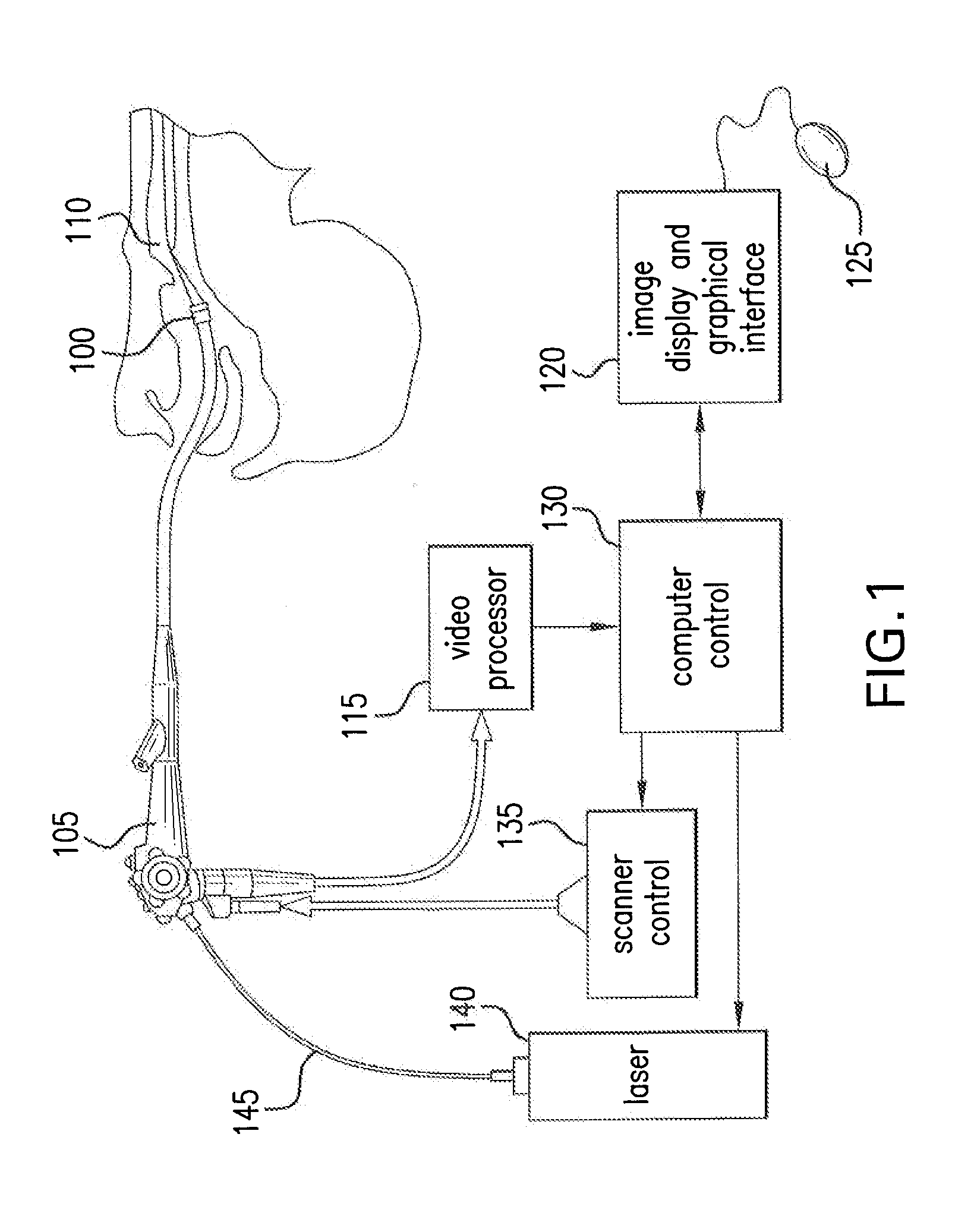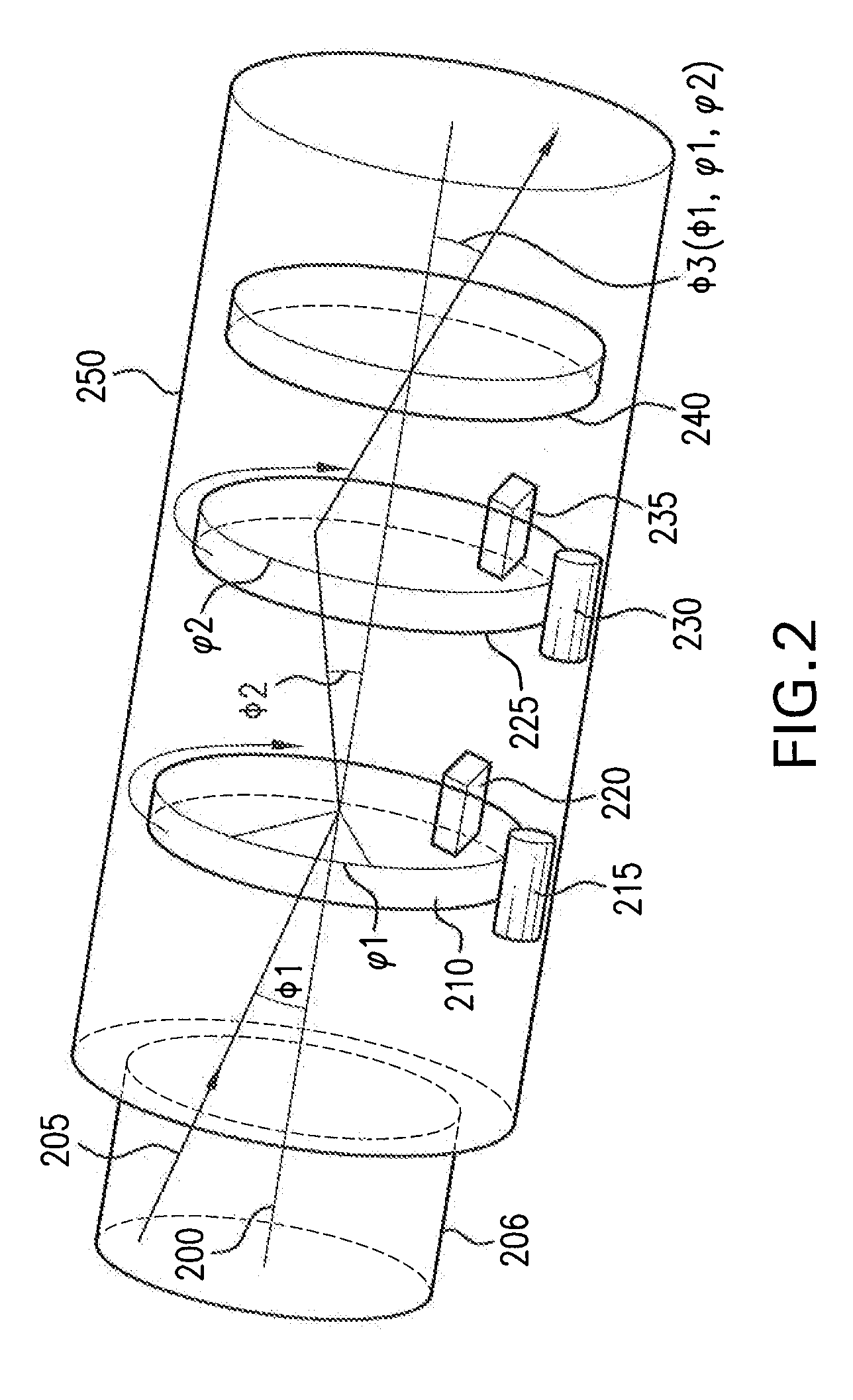Apparatus, system and method for providing laser steering and focusing for incision, excision and ablation of tissue in minimally-invasive surgery
a technology of applied in the field of apparatus, system and method of providing laser steering and focusing for incision, excision and ablation of tissue in minimally-invasive surgery, can solve the problems of sub>2 /sub>laser, beam's likely inability to travel in any other medium than air, and still largely limited to operations, etc., to facilitate the exemplary process
- Summary
- Abstract
- Description
- Claims
- Application Information
AI Technical Summary
Benefits of technology
Problems solved by technology
Method used
Image
Examples
Embodiment Construction
[0011]Indeed, one of the objects of certain exemplary embodiments of the present disclosure can be to address the exemplary problems described herein above, and / or to overcome the exemplary deficiencies commonly associated with the prior art as, e.g., described herein. Accordingly, for example, provided and described herein are certain exemplary embodiments of exemplary apparatus, system, procedure and method according to the present disclosure which can be used for providing laser steering and focusing for incision, excision and / or ablation of tissue in minimally-invasive surgery.
[0012]According to one exemplary embodiment of the present disclosure, an exemplary apparatus is provided that can include at least one optical element which can be configured to refract and / or diffract light provided in at least one structure which can be configured to be inserted into a body, where at least one of the optical element(s) is structured to receive the light at a first angle and generate a r...
PUM
 Login to View More
Login to View More Abstract
Description
Claims
Application Information
 Login to View More
Login to View More - R&D
- Intellectual Property
- Life Sciences
- Materials
- Tech Scout
- Unparalleled Data Quality
- Higher Quality Content
- 60% Fewer Hallucinations
Browse by: Latest US Patents, China's latest patents, Technical Efficacy Thesaurus, Application Domain, Technology Topic, Popular Technical Reports.
© 2025 PatSnap. All rights reserved.Legal|Privacy policy|Modern Slavery Act Transparency Statement|Sitemap|About US| Contact US: help@patsnap.com



